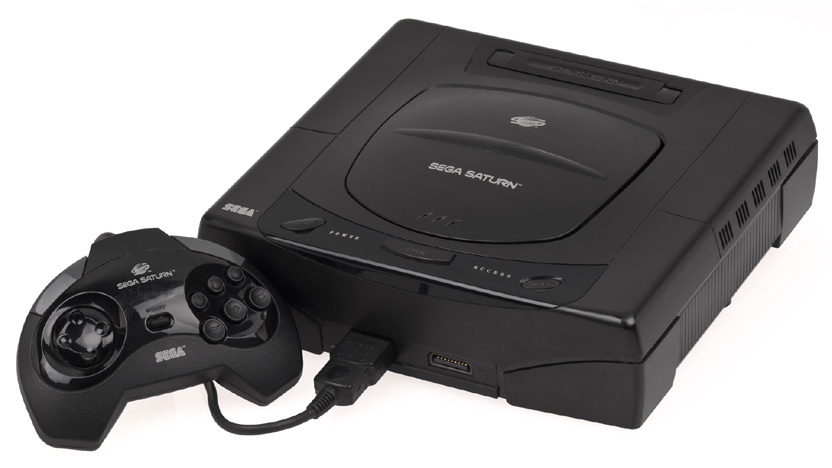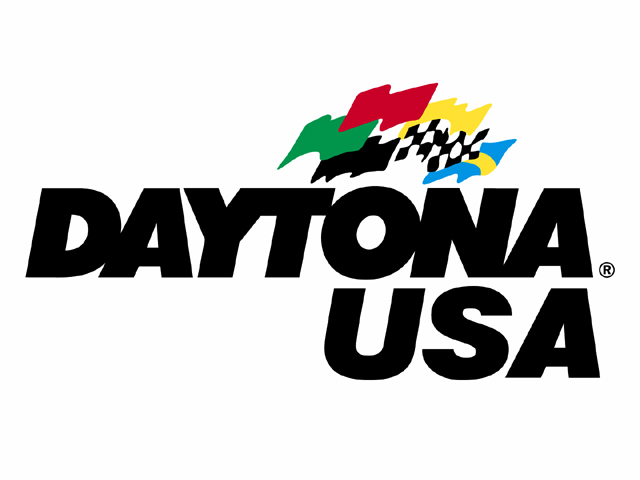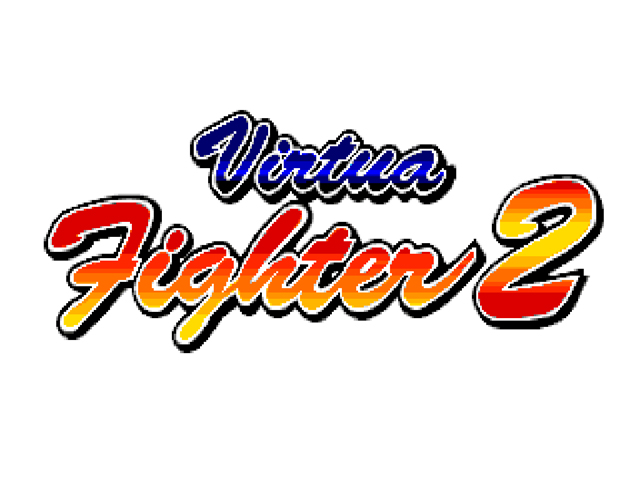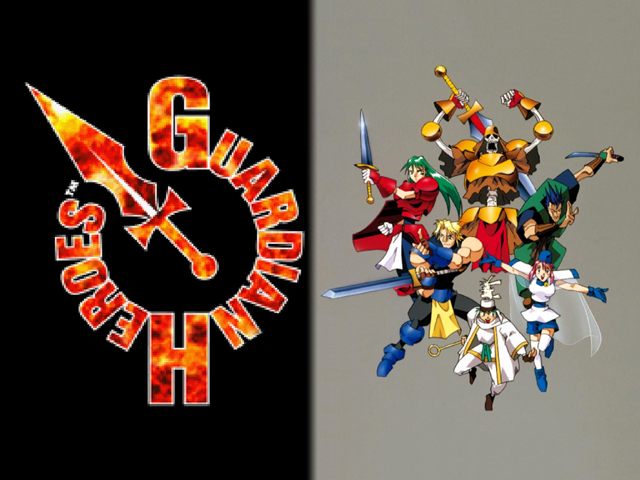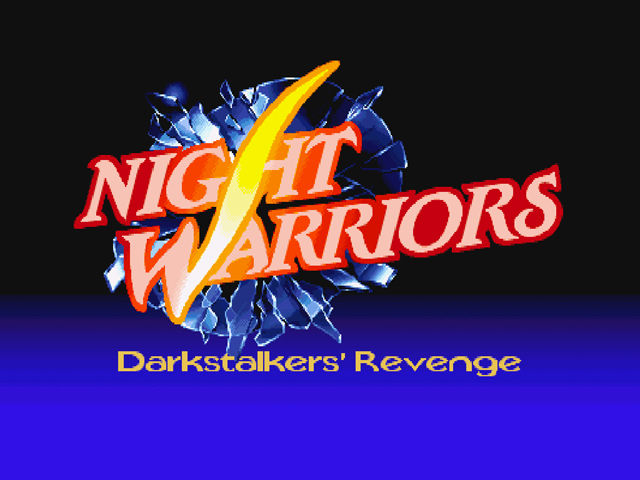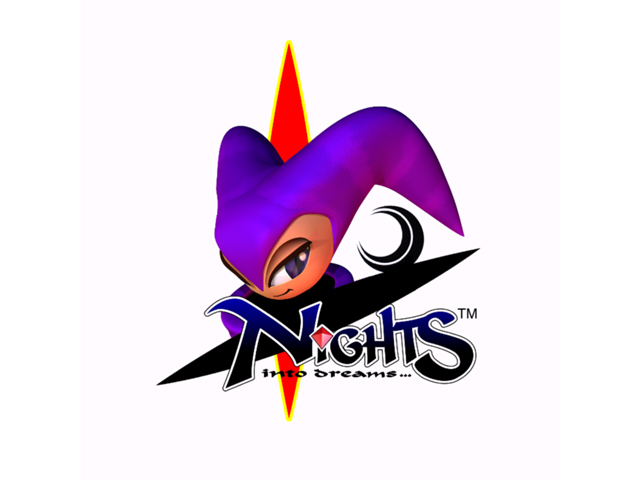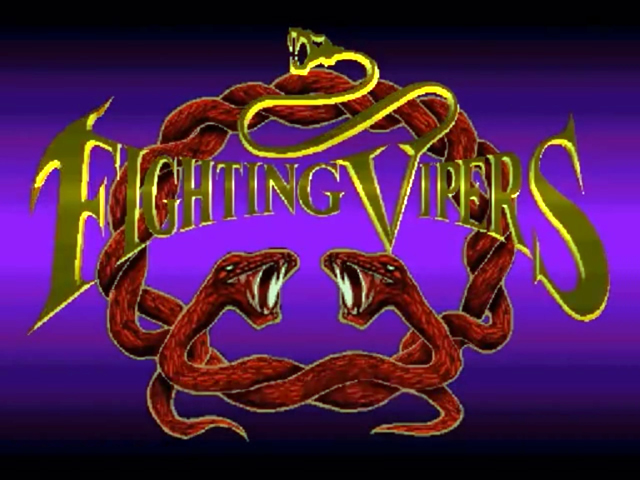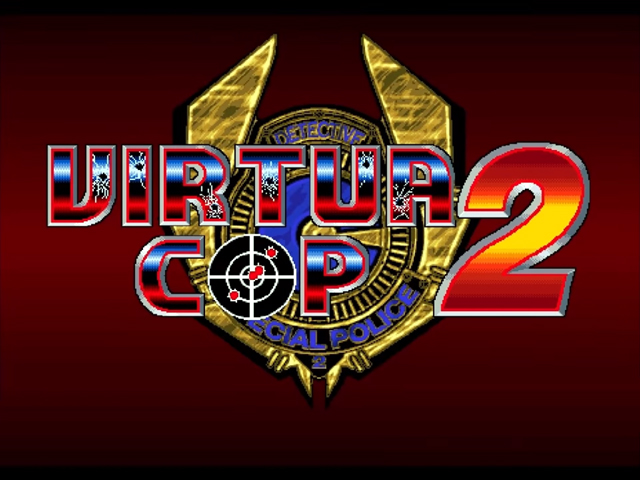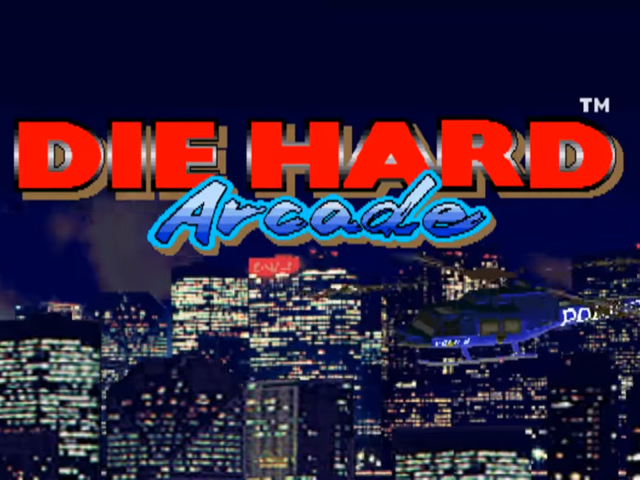The Sega Saturn was an important chapter in the history of game consoles, mostly for not doing much of anything right. Though it was a technically sound piece of hardware that theoretically should (and could) have gone toe to toe with Sony's disruptive PlayStation, a series of monumental errors on the part of Sega caused the Saturn to wither and die a tragic and somewhat untimely death at retail. Since that time, it has been all but forgotten by the majority of gaming culture but it's worth remembering for the lessons that can be learned from its various associated blunders, as well as for the few things the console did have going for it.
Sega's failures with the Saturn were manifold and they arguably began before the system was even conceived of. In the early part of the '90s, in order to compete with NEC's recently released TurboGrafx CD (as well as Nintendo's rumored upcoming Super Nintendo CD add-on (which is what essentially went on to become the PlayStation) Sega decided to develop and release their own CD drive for their popular Genesis console. Later, Sega would also release an additional, more powerful, cartridge-based add-on for the Genesis - the 32X. Both of these peripherals were largely over-priced failures that mainly served to fragment and frustrate Sega's previously growing fan base.
Despite the fact that backwards compatibility has never been much of an industry standard, the lack of it in the Saturn's case certainly didn't win it any supporters. Sega's newest console included a CD drive and a cartridge slot, yet could play neither Sega CD discs, nor any of the two previous generations worth of Master System, Genesis, or 32X cartridges. Adding insult to injury, the Saturn was announced at a price point of $399, $100 more than Sony's PlayStation. Many fans balked at the prospect of having to pay more for Sega's hardware, after having already shelled out for supefluous add-ons and media that were no longer being supported.
Finally, Sega had initially indicated that the Saturn would launch on Satur[n]day, September 2nd, 1995. However, they decided to be clever and try to get a jump on the competition. At the (very first) Electronic Entertainment Expo on May 11th of that year, they surprised everyone by announcing that it was already available, that very day, at select stores. Unfortunately, the plan backfired. Key retailers that were not let in on the surprise were more than a little upset with Sega. One store chain even responded by dropping Sega's wares altogether. To make matters worse, most of the launch games were still scheduled for release in September, leaving the Saturn with few titles to choose from during the first several months of its life. By the time the PlayStation was released, not a great deal of gamers had opted to pick up a Saturn and Sony's console quickly and easily surpassed the sales of Sega's offering.
Sega may have inadvertently sealed the Saturn's fate before (and even on) the date it came out, but that doesn't mean the console was totally worthless. To the Sega loyalists who were still willing to buy one when it launched, or the more cost-conscious fans who waited for the price reductions that followed soon after, the Saturn was still the best place to play fantastic new titles that could only be found in the arcades (if anywhere else). The games are the biggest reason why, despite all of its numerous failings, the Saturn is still viewed with a modicum of respect, and a good bit of nostalgia in certain circles. So, as a way to honor it on its 24th birthday today, we would like to present you with 12 such examples of the Sega Saturn's said sole saving grace.
Daytona USA (SEGA, 1995)
"DAYTONAAA!!!" Daytona USA was a huge hit in the arcades in the mid '90s. One of the hottest-looking racing games around, Daytona USA eventually went on to become one of the highest grossing arcade games of all time. As a launch title for the Saturn, it gave Sega fans a reason to rejoice right off the bat. The lack of a multiplayer mode may have been a little disappointing, but the fact that it was exclusive to the Saturn gave console owners bragging rights. And as one of the few high profile games actually available when the system was released, Daytona USA was basically a must-purchase for any early adopter.
Panzer Dragoon (SEGA, 1995)
Along with Nights (we'll get to that one a little further down), the Panzer Dragoon titles are remembered as perhaps the most unique and iconic games ever to grace the Sega Saturn. The first entry, in particular, as that was the one that really kicked things off (both for the series, and as a launch title for the Saturn). Sharing more than a passing similarity to Sega's '80s arcade classic, Space Harrier, Panzer Dragoon featured some pretty stunning (for the time) visuals, bizarre dragon-like creatures, and plenty of aerial third-person shooting action. The game served as both a great example of what the Saturn was capable of and as one of the first critical hits during those early sparse months of the console's life.
Virtua Fighter 2 (SEGA, 1995)
There is some debate amongst fans about which of the first two Virtua Fighter games is superior. They both took the arcades by storm in the mid '90s, and they both featured cutting edge three-dimensional graphics and gameplay. The first one, however, set the stage, and many purists feel that the original is almost always the best (there is certainly some truth to that). Yet the second entry of any series is often the more varied and refined, as was the case with Virtua Fighter 2. Both games were ported pretty faithfully from the arcade versions to the Saturn during its first year on the market. The first Virtua Fighter game was also ported to the 32X in the same year though, so we've decided to declare Virtua Fighter 2 the winner by technical knockout (as far as the Saturn versions are concerned). But seeing as early Saturn owners had, not one, but two fantastically groundbreaking arcade fighting games available to choose from, they probably considered themselves to be the real winners.
SEGA Rally Championship (SEGA, 1995)
"GAME OVER, YEAH!!!" What was up with Sega racing games and those bizarre melodic voice-over exclamations, anyway? Along with Daytona USA, SEGA Rally Championship was Sega's other big arcade racer that made its way onto the Saturn (though not until several months later). The big draw for this game (other than the Saturn version's very welcome two-player split-screen mode), was the changing road surfaces and the way the cars would handle differently while upon them. Though SEGA Rally Championship wasn't the first rally video game ever made, it was arguably the first to do it well. So well, in fact, that developers have specifically cited the series as having strongly influenced many of the great racing games that followed over the years. That being the case, SEGA Rally Championship's role and importance in gaming history cannot be understated.
Guardian Heroes (SEGA, 1996)
Guardian Heroes, the Sega published, Treasue developed split-plane Saturn brawler is one of the few 2-D games on this list. That's because it was actually one of the few 2-D games available on the Saturn. As the saying goes though, "if it ain't broke, don't fix it". And Treasure's games are typically anything but broken. They've long been hailed as the great development studio that they are. And just as their Genesis hit, Gunstar Heroes, is largely seen as one of the best titles to ever bust on to that system, so too is Guardian Heroes similarly lauded as one of the all-time greatest Saturn exclusives. In addition to the fantastic visuals, entertaining gameplay, and branching, selectable paths, the game also featured multiplayer modes for two to up to six players! No Saturn collection was truly complete without Guardian Heroes.
Night Warriors: Darkstalkers Revenge (Capcom, 1996)
Although the PlayStation may have had several advantages over the Saturn, games weren't necessarily one of them. Not always, anyway. Take Capcom's hit Halloween-esque arcade fighter series, Darkstalkers, for instance. The first entry to appear on any console, Night Warriors, was actually the second entry in the series. And where, you may ask, did it come? Where else? The Saturn. The PlayStation did get its own entry shortly thereafter, but it wasn't Night Warriors. Sony's console only received the original Darkstalkers game, with fewer playable characters than the sequel, and only after that one had already come out exclusively for the Saturn. Ouch. While it's true that a Darkstalkers sequel might not have been the decisive console wars victory Saturn fans had been hoping for, it certainly wasn't nothing.
X-Men: Children of the Atom (Capcom, 1996)
In the mid-1990s, the Saturday morning X-Men cartoon series was all the rage with kids and comics fans everywhere. So, when Capcom acquired the license and began making Street Fighter-esque arcade fighting games with it, it was a match-up made in nerd heaven. Eventually, they expanded on the premise and included their Street Fighter characters, and then, finally, all manner of Marvel characters versus an assortment of Capcom favorites from several of their games. The entry that started it all, though, was X-Men: Children of the Atom, and it was an absolute triumph (which is why it so quickly paved the way for the abundance of follow-ups that succeeded it). The fact that this extraordinarily popular arcade game was initially only ported to the Saturn was a pretty big deal at the time.
Nights (Into Dreams...) (Sonic Team, 1996)
Though several of the staff members there had previously worked on multiple Sonic the Hedgehog games previously (under different studio names), their first official title under the Sonic Team moniker was, ironically, not a Sonic game at all. Instead, the newly-christened studio elected to create an entirely new property for their debut release - Nights (Into Dreams...). Despite not being a Sonic game, Nights was still a pretty amazing experience in its own right. The colorful graphics, unique design, and quasi-three-dimensional flying were very well received by gamers and critics alike. In the regrettable absence of a legitimate Sonic appearance on the system, Nights filled in by serving as the de facto mascot for the Sega Saturn (which made the game something of a required purchase among Saturn owners). Nights was also noteworthy in that a special analogue controller was created especially for use with the game and it ended up becoming a key inspiration for future controller designs.
Fighting Vipers (SEGA, 1996)
You'd think that Sega might have been content with two of their biggest three-dimensional arcade fighters already occupying the Saturn space. Evidently, that wasn't quite enough for them though because a short while later, they also decided to bring another one over. Though pretty similar to the Virtua Fighter games in many respects, Fighting Vipers had enough differences to stand apart and make it a worthy contender. Some of these included a completely new cast of colorful of characters, a fairly unique armor mechanic, and enclosed arenas with breakable barriers. Despite not reaching the same level of popularity as Virtua Fighter (particularly in the arcades), Fighting Vipers did find a rather respectable following on the Saturn, and it was a solid choice for fighting fans in search of a little variety.
Virtua Cop 2 (SEGA, 1996)
Like Virtua Fighter 1 and 2, the first two Virtua Cop games were also both incredibly popular arcade titles that Sega brought over to the early Saturn - the first, in '95 and the second, a year later. They were also similar (aside from the title) in their unique use of polygonal characters, as opposed to the much more common two-dimensional sprites of the time. Virtua Cop and its sequel also set themselves apart from other shooters of the day by allowing the player to target specific areas of the body, such as a gun hand, which would disarm the enemy instead of killing them. While either one of these games was a worthwhile purchase that could provide plenty of single-player and/or cooperative fun, the second entry, was particularly entertaining. That being said, if you were a Saturn owner who had already shelled out for the official Stunner light gun controller, odds are, you ended up just adding both of them to your collection.
Die Hard (Arcade) (SEGA, 1997)
Die Hard (Arcade) is exactly what the title says - a licensed Die Hard game, developed for the arcades (by Sega). Except, they also decided to make a version for the Saturn (and thankfully, both versions are pretty similar). Though unsuspecting gamers of the time may have been tempted to dismiss this game as another likely terrible movie license cash-in, they would have been pretty foolish to do so. Not only was this hands down the greatest game ever based on the movie Die Hard, but it's also one of the best movie license games of all time (arcade or otherwise). Though some critics did feel that the length was a bit on the short side, for anyone who enjoyed the movie Die Hard and/or playing arcade-style cooperative brawlers, this game was pretty much a no-brainer.
Panzer Dragoon Saga (SEGA, 1998)
There's a reason that people who remember the Saturn fondly often remember Panzer Dragoon so well. It's the series that basically bookended the console. The first game debuted alongside the system's launch, at the very beginning, and the last entry to arrive on the console was also one of the Saturn's very last games, coming right during its very last days. That effectively makes Panzer Dragoon Saga the Saturn's swan song, and, oh, what an amazing song it was! Shifting gears a bit from the first two installments, Saga mostly abandoned the action gameplay of those entries for a much more classic RPG style. Despite this fairly dramatic change, Panzer Dragoon Saga was incredibly well-received, garnering much praise and even being favorably compared by some to Final Fantasy VII, not only one of the most highly-acclaimed RPGs ever to appear on the PlayStation, but, perhaps, anywhere. Talk about going out on a high note!
Despite experiencing only a few minor missteps during the course of its lifetime, Sega's Genesis console was otherwise nothing but wildly successful. Unfortunately for Sega however, those very same missteps would go on to contribute to the ultimate failure of their next console, the Saturn. But instead of compensating for these errors and attempting to get back on track, Sega, effectively continued to fall apart leading up to, during, and even following the Saturn's launch, in a spectacular cascade of failures, seldom seen in the console industry. They couldn't even manage to put out a single proper Sonic the Hedgehog game, despite having four on the Genesis and one each (more or less) on the Sega CD and 32X.
Sony used Sega's apparent ineptitude to their unquestionable advantage, quickly and easily taking a commanding early lead with their debut PlayStation console. In the second year of competition, the Nintendo 64 had entered the fray and Sega only fell further behind in sales. By late 1997, Sega only controlled 12% of the console market and, a year later, decided to cut their losses and shift focus to their next console, the Dreamcast. Despite having a much better marketing strategy and a legitimate Sonic game this time, the Dreamcast, too, ultimately ended in failure and tragically marked the end of Sega's lengthy and dramatic career as a console manufacturer.
Thankfully, Sega wasn't totally destroyed by their failures and they were able to succeed in finding a way to press on as a developer and publisher. In that capacity, they found new success by partnering up with their former rivals and continuing to create those same memorable experiences that made their own consoles such a force to be reckoned with (for the most part) in the first place. While the Saturn may not have represented their finest hour in the console wars, they were able to keep things at least somewhat interesting for a time, no matter how fleeting it may have been.
(This is a repost of an article that also appeared on 12/12 Games.)
[Images: SEGA, Capcom]

